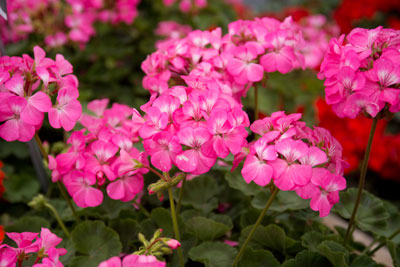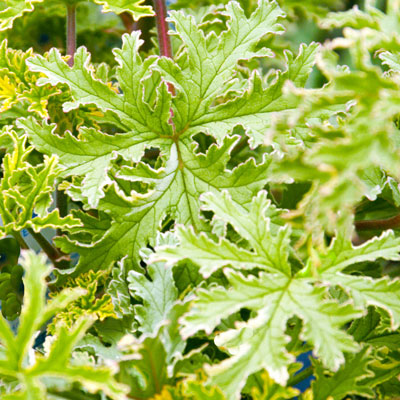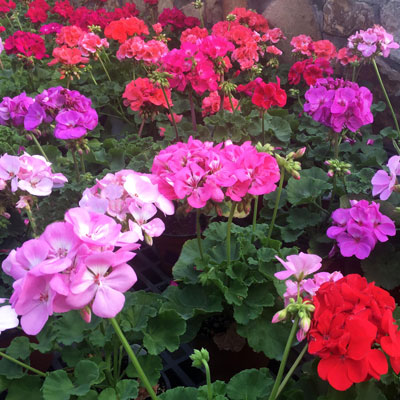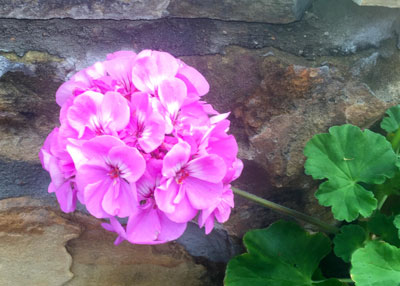Glorious Geraniums
Geraniums come in several flavors and forms:
• Zonale geraniums are the ones most of us know best, with the large red, pink or white flower clusters atop cheerful green foliage.

Pink zonale geranium is only one of many great colors.
• Ivy geraniums are trailing types with glossy, dark green, ivy-like leaves. They’re more common in cooler climates.
• Scented geraniums are found in nurseries with herbs. There are all manners of aromas, growth forms and looks. Some are much larger and stronger than others. All are fun.

Variegated peppermint-scented geranium is used for potpourri and also as a garden annual. It is large and strong-growing.
• And to a botanist, true geraniums are something that looks entirely different. Our cultivated forms, after all, are mostly in the genus Pelargonium.
Garden Geraniums
For the sake of this discussion, let’s focus on the first of those groups, the geraniums you’ll find in profusion in local nurseries this time of year. Here are the steps to success.
• Buy them early, both for best selection and to take advantage of sunny, cool weather. Most of these “fancy” geraniums prefer high temperatures in the 70s to anything warmer. Their best months are March through May and into early June.

Geraniums in many colors, as seen in Calloways Nursery earlier this week.
• Full or nearly full sun. Like most other flowering annuals, these bloom best in good light. Excessive shade reduces bloom count, and it also results in lanky, stretched plants.
• Buy healthy, vigorous plants, probably in 6-inch pots. Look for leaves that are bright green and free of any signs of insects or fungal leaf spots. The flowers should just be starting to open.
• Geraniums appreciate the mobility and good drainage of being grown in large pots. You can move them inside when it’s freezing or out of the sun in the summer.

Geraniums are best used in patio pots to ensure good drainage and to take advantage of portability.
• Use a lightweight, highly organic potting soil. It’s wise to have as much as 10 or 15 percent of the potting soil made up of expanded shale to give it more weight. The plants can become top-heavy in the spring winds.
• Apply a high-nitrogen, water-soluble plant food each time that you water. Let the plants begin to get slightly dry before you water again, then soak their soil thoroughly.
• Groom the plants to remove old flower heads as they finish. Snap the old heads off with your thumbnail and fingers rather than using a knife or shears. If there are vascular diseases in the plant (a problem with geraniums in your grandma’s era), they can be transmitted on the knife’s surface.
• As temperatures climb into the 90s consistently in late May and June, expect your geraniums to start going downhill. Production of flowers will grind to a stop, and leaves may even begin to turn pale. If you want to try to bring your plant through the summer, keep it moist and out of the sun. Avoid the high-nitrogen feedings at that time. Move the pot back into the sunlight once it starts to cool in the fall.
Geraniums are propagated from stem cuttings that are about 5 inches long. Let them dry and callous for a day or two before you stick them into your very porous rooting medium in pots. The newest trend in geraniums over the past 35 or 40 years has been to growing them from seed. Current-day hybrids are outstanding plants, but it’s too late to start them now for your spring enjoyment. Keep them in mind for next year. Look for them as potted transplants in nurseries now.
